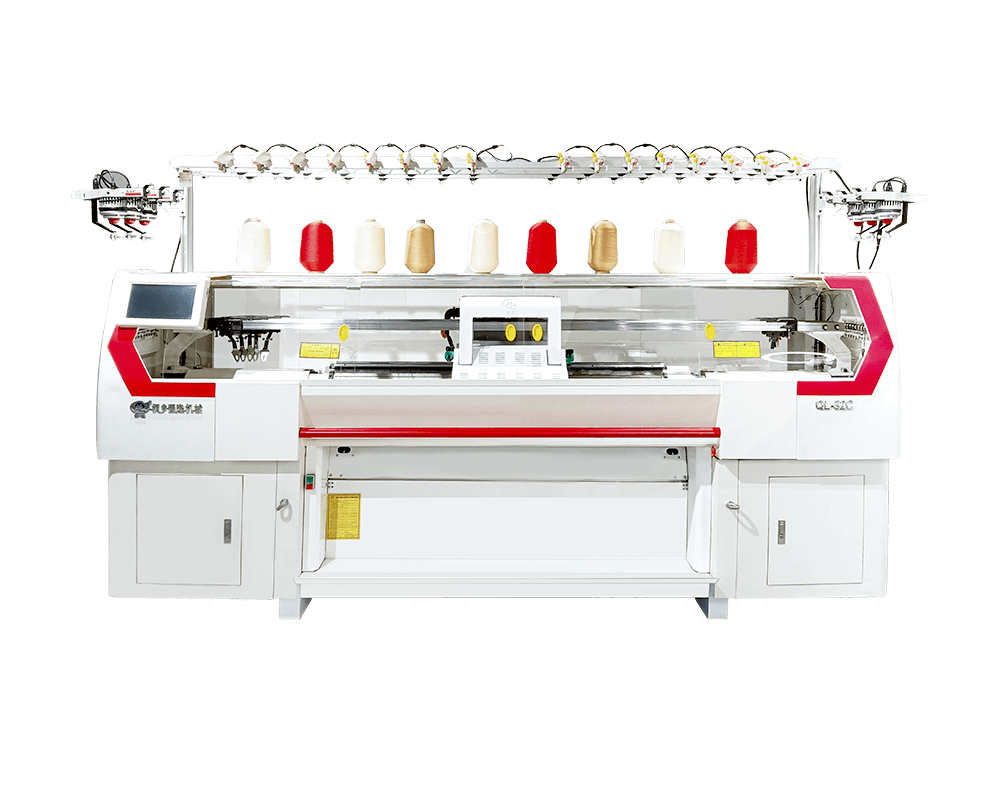Tongxiang Qianglong Machinery Co., Ltd. is high-tech China wholesale computerized flat knitting machine manufacturers, specialized in designing, developing, and manufacturing Knitting Machinery..
The expected lifespan of a whole garment knitting machine can vary depending on several factors, including the machine's brand, model, usage intensity, maintenance practices, and technological advancements. In general, a well-maintained and properly cared for whole garment knitting machine can have an operational life ranging from 10 to 20 years or more. However, it's important to consider the following factors that can influence the lifespan of these machines:
Machine Quality and Brand: The quality and reputation of the manufacturer can significantly affect the machine's durability. High-quality machines from reputable manufacturers may have longer lifespans.

Usage Intensity: The frequency and intensity of machine use play a role in determining its lifespan. Machines used in high-volume industrial settings may experience more wear and tear than those used for smaller-scale or custom production.
Maintenance and Care: Proper and regular maintenance is crucial for extending the lifespan of a knitting machine. Neglecting maintenance can lead to premature wear and breakdowns.
Technological Advancements: Advances in knitting machine technology and automation may lead to the replacement of older machines with more efficient and capable models, even if the older machines are still operational.
Upgrades and Repairs: Some knitting machines can be upgraded with new components or features to extend their functionality and lifespan. However, the availability of upgrades may vary by machine model.
Environmental Conditions: The environment in which the machine operates can impact its longevity. Extreme temperatures, humidity, dust, and contaminants can affect the machine's performance and lifespan.
Operator Skill: Proper machine operation by skilled operators can prevent unnecessary wear and damage. Inexperienced or untrained operators may inadvertently cause issues that shorten the machine's lifespan.
Availability of Spare Parts: The availability of spare parts and support from the manufacturer or distributor can influence how long a machine remains in service. Machines for which spare parts are scarce may have a shorter lifespan.
Market Demand: Changes in market demand for different types of garments and technologies can affect a business's decision to replace or upgrade knitting machines.
Budget and ROI: As with any capital equipment, businesses must consider the return on investment (ROI) when determining the optimal lifespan of a knitting machine. If a machine is no longer cost-effective or cannot meet evolving production needs, it may be replaced earlier.
It's important for businesses that rely on whole garment knitting machines to carefully assess their specific production requirements, long-term goals, and budget constraints when determining the ideal machine lifespan. Regularly scheduled maintenance and keeping up with technological advancements in the industry can help maximize the machine's productive life and ensure it remains a valuable asset to the business.

 English
English 简体中文
简体中文
 Chinese
Chinese English
English











